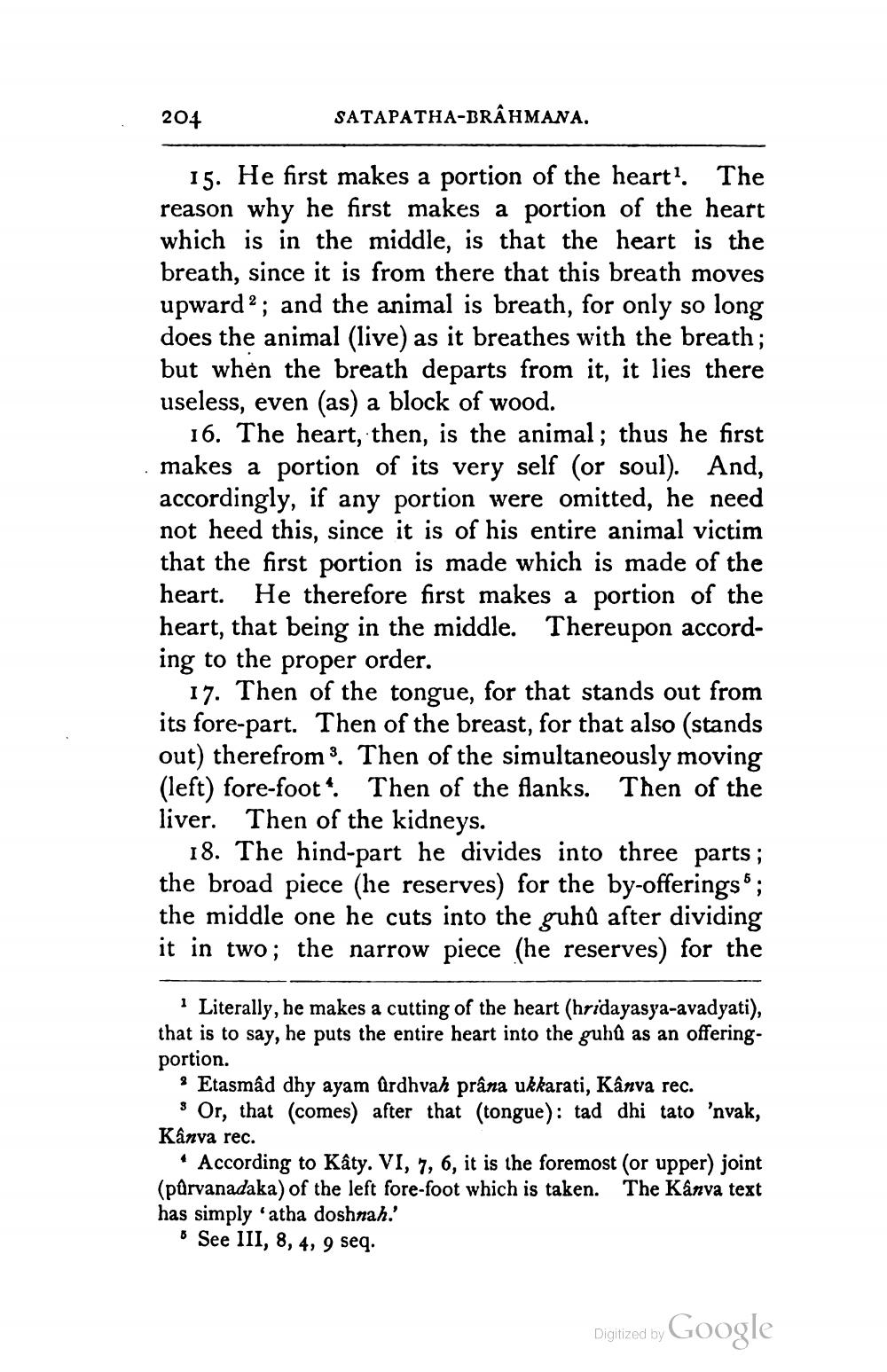________________
204
SATAPATHA-BRAHMANA.
15. He first makes a portion of the heart? The reason why he first makes a portion of the heart which is in the middle, is that the heart is the breath, since it is from there that this breath moves upward?; and the animal is breath, for only so long does the animal (live) as it breathes with the breath; but when the breath departs from it, it lies there useless, even (as) a block of wood.
16. The heart, then, is the animal; thus he first . makes a portion of its very self (or soul). And,
accordingly, if any portion were omitted, he need not heed this, since it is of his entire animal victim that the first portion is made which is made of the heart. He therefore first makes a portion of the heart, that being in the middle. Thereupon according to the proper order.
17. Then of the tongue, for that stands out from its fore-part. Then of the breast, for that also (stands out) therefrom. Then of the simultaneously moving (left) fore-foot". Then of the flanks. Then of the liver. Then of the kidneys.
18. The hind-part he divides into three parts ; the broad piece (he reserves) for the by-offerings 6 ; the middle one he cuts into the guhů after dividing it in two; the narrow piece (he reserves) for the
Literally, he makes a cutting of the heart (hridayasya-avadyati), that is to say, he puts the entire heart into the guhů as an offeringportion.
Etasmad dhy ayam urdhvah prâna ukkarati, Kânva rec. s Or, that comes) after that (tongue): tad dhi tato 'nvak, Kanva rec.
* According to Kâty. VI, 7, 6, it is the foremost (or upper) joint (pârvanadaka) of the left fore-foot which is taken. The Kanva text has simply "atha doshnah.'
o See III, 8, 4, 9 seq.
Digitized by Google




